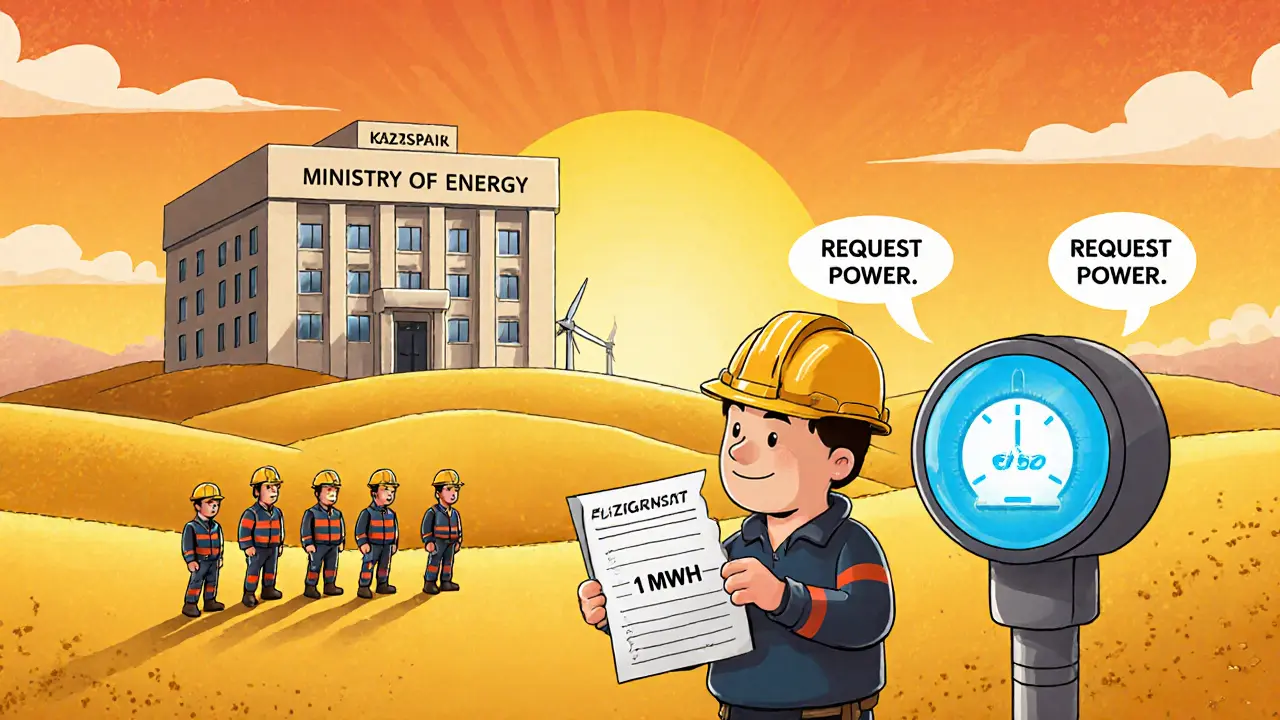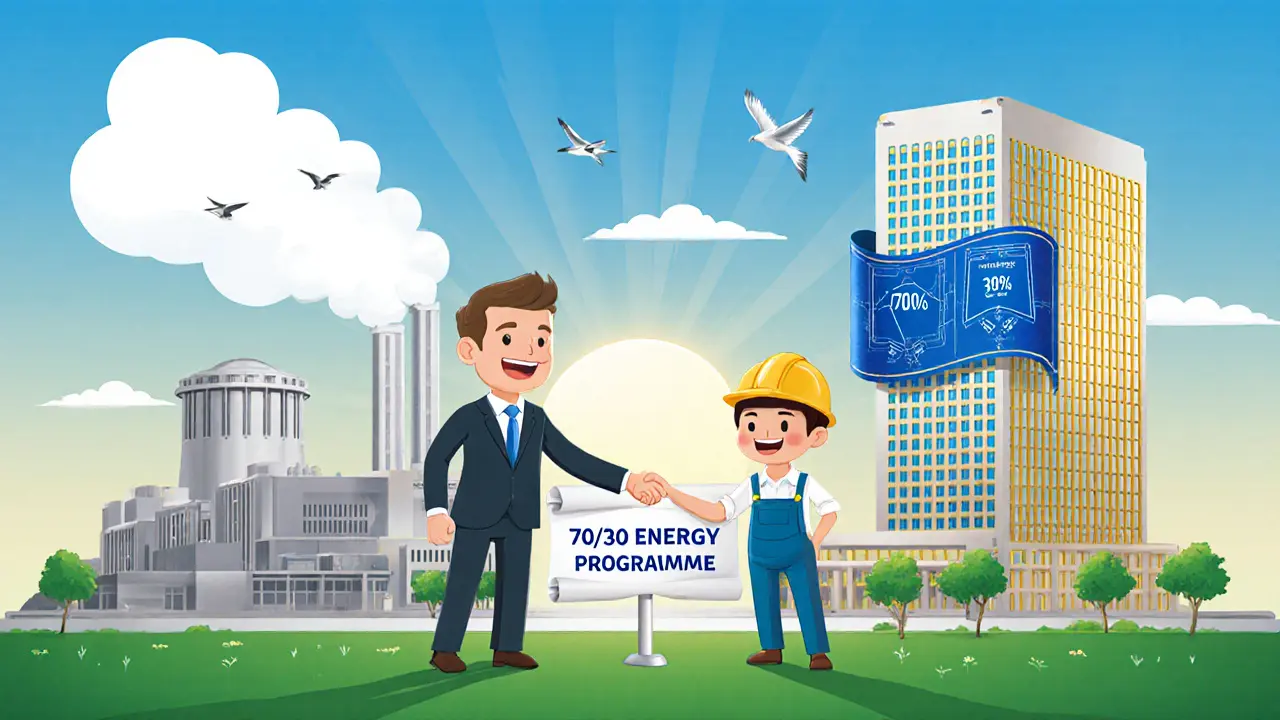Posted By Tristan Valehart On 13 Oct 2025 Comments (1)

Kazakhstan Mining Electricity Calculator
Estimate Your Mining Costs in Kazakhstan
Calculate your electricity purchase requirements, compliance costs, and net revenue based on Kazakhstan's mining regulations.
Based on Kazakhstan's regulations: 1 MWh purchase cap per transaction, 75% asset sale requirement, 15% tax on profit, and 10-15% compliance costs.
Quick Takeaways
- Kazakhstan limits crypto miners to 1MWh per electricity purchase through a state‑run marketplace.
- Licensed miners must sell 75% of their crypto output on AIFC platforms and pay a 15% tax.
- Illegal mining schemes have stolen over $16million in power, equivalent to a 50‑70kW city load.
- Compliance costs can consume 10‑15% of a medium‑size operation’s budget.
- Future policy leans toward a 70/30 energy programme that could boost legal capacity while tightening enforcement.
When China cracked down on mining in 2021, a wave of operators packed their rigs into Kazakhstan’s cheap‑energy corridors. The boom quickly overloaded the national grid, prompting the government to roll out a strict electricity rationing system that caps crypto miners’ power purchases and ties a large share of their output to state‑approved exchanges. This guide walks you through how the regime works, what real‑world miners experience, and why illegal operations remain a costly headache.
How the Rationing System Is Structured
The Ministry of Energy runs a centralized electricity marketplace. Every licensed miner must log in, request power, and accept a hard cap of 1megawatt‑hour (MWh) per transaction. The cap prevents any single farm from draining the grid, but it also forces larger operators to split orders across multiple days.
Ministry of Energy oversees the platform, while the Astana International Financial Centre (AIFC) hosts the mandatory exchange where 75% of mined coins must be sold. The tax rate sits at 15% on profit, and the licensing body has issued 84 active mining licenses as of 2025.
Licensing, Equipment Registration, and Ongoing Compliance
- Apply for one of the 84 licences through the Ministry’s portal.
- Register every ASIC or GPU in the national database - 415,000 machines were logged in 2023.
- Choose an accredited mining pool from the five approved options.
- Maintain a consumption log that never exceeds 1MWh per purchase.
- Submit quarterly reports showing the 75% asset sale on AIFC platforms.
- Pay the 15% tax on declared mining profits.
Compliance teams estimate that documentation and reporting eat up roughly 10‑15% of operating expenses for a mid‑size farm.

Impact on the Power Grid and the Economy
Before the rationing rules, miners were consuming up to 5GW of power - roughly 20% of the national load. After the caps and licensing, official consumption fell to about 2GW, easing pressure on residential and industrial users.
However, the government still faces a hidden burden: illegal operations that bypass the marketplace. In October2025, investigators uncovered a scheme in East Kazakhstan Oblast that siphoned 50MWh of power over two years, worth about 9billion tenge (≈$16.5million). That amount could power a city of 50,000‑70,000 residents.
Case Study: The East Kazakhstan Illegal Mining Bust
The Financial Monitoring Agency (AFM) teamed up with the National Security Committee (KNB) to dismantle a network that sold residential electricity to underground farms. The operation bought power through corrupt utility employees, then used the stolen energy to run over 2,000 ASICs.
Key takeaways from the bust:
- Corruption inside utility firms can nullify even the toughest rationing caps.
- Illicit mining generated enough revenue to purchase two apartments in Astana and four luxury cars.
- Seizure of assets signaled that authorities are willing to pursue money‑laundering links.
Official vs. Illegal Mining: A Quick Comparison
| Aspect | Licensed (Official) | Unlicensed (Illegal) |
|---|---|---|
| Power Source | State‑run marketplace, 1MWh cap per transaction | Direct utility lines, no cap |
| Asset Sale Requirement | 75% sold on AIFC platforms | None - can hold or off‑load privately |
| Taxation | 15% profit tax | None (hidden) |
| Compliance Cost | 10‑15% of OPEX | Cost of bribery & equipment concealment |
| Legal Risk | License revocation, fines | Criminal prosecution, asset seizure |
| Average Power Use (per farm) | 0.5‑1GW (capped) | Up to 2‑3GW (unlimited) |

Industry Perspectives: What Miners and Analysts Say
Energy analyst Tuleushin argues that miners can act as “flex‑load” consumers, soaking up surplus generation during off‑peak hours. The 70/30 energy programme - a proposal where foreign investors fund thermal upgrades, allocating 70% to the grid and 30% to miners - could expand that flexibility.
Conversely, the East Kazakhstan case highlights enforcement gaps. Corrupt insiders can undermine the system, and smaller miners often struggle with the administrative load of multiple 1MWh purchases and AIFC reporting.
Future Outlook: Policy Tweaks and Market Trends
Legislator Ekaterina Smyshlyaeva is pushing for tighter control over licensed exchanges and even de‑criminalising crypto trading on approved platforms. If passed, the regulatory perimeter could widen beyond mining to cover broader digital‑finance activities.
On the demand side, global crypto mining is projected to grow at a 13.2% CAGR through 2035, with the sector consuming about 0.55% of worldwide electricity by mid‑2025. Kazakhstan’s share will likely stay significant as long as it balances grid stability with legal capacity.
Key developments to watch:
- Implementation of the 70/30 energy programme - could add 1‑2GW of legal mining capacity.
- Strengthened utility monitoring to close insider loopholes.
- Potential adjustments to the 75% AIFC sale rule if market feedback demands flexibility.
Practical Checklist for New Entrants
- Secure a Ministry of Energy licence (84 slots available).
- Register each mining device in the national database.
- Choose an accredited pool - check the official list.
- Plan power purchases: break a 5GW need into 1MWh batches.
- Set up AIFC integration early to meet the 75% sell‑off requirement.
- Budget 10‑15% of OPEX for compliance staff or external consultants.
Frequently Asked Questions
Why does Kazakhstan cap electricity purchases at 1MWh for miners?
The cap prevents any single operation from overwhelming the national grid, which historically struggled when Chinese miners relocated in 2021. By limiting each transaction to 1MWh, the Ministry can spread load more evenly and protect residential supply.
What happens if a licensed miner exceeds the 1MWh limit?
Exceeding the limit triggers a formal audit. Repeated violations can lead to fines, licence suspension, or revocation. The Ministry tracks purchases in real‑time, so breaches are flagged quickly.
How is the 75% asset‑sale rule enforced?
Mining farms must submit quarterly transaction logs to the AIFC platform. The platform cross‑checks on‑chain data with reported sales. Any shortfall results in a penalty equal to the missing percentage of profit.
Can foreign investors participate in the 70/30 energy programme?
Yes. The proposal invites private capital to fund thermal‑power upgrades. In return, investors receive rights to allocate up to 30% of the new capacity to licensed mining farms under the existing rationing rules.
What are the biggest risks for new mining startups in Kazakhstan?
The main risks are administrative bottlenecks (multiple 1MWh purchases), compliance costs (10‑15% of OPEX), and potential corruption in local utilities that could expose you to illegal power diversion accusations. Engaging a local legal advisor is strongly recommended.

VEL MURUGAN
October 13, 2025 AT 09:33Looks like the Kazakh regulator put a 1 MWh cap per transaction, which means you can’t just buy bulk power to run a massive farm. The 75 % asset sale rule forces miners to off‑load most of their hardware if they want to stay compliant. On top of that, they sprinkle a 15 % profit tax and an extra 10‑15 % compliance fee on top. In practice that can shave a healthy chunk off any realistic ROI. Bottom line: you’ll need to crunch the numbers before you even think about plugging in a single ASIC.